#Community Advisory Committee
Text
Minnesota United FC had grand plans outside their new stadium in 2016. Now? Not so much
It is 2016. Local leaders in St. Paul, Minnesota were debating whether to give millions of taxpayer dollars to Minnesota United FC to help with the construction of a new soccer stadium, named Allianz Field. This included a mixed-use development around the new stadium.
In 2016, the owner of Minnesota United FC showed the city council a 33-page master plan that outlined a “series of public spaces,…

View On WordPress
#Allianz Field#Bill McGuire#Community Advisory Committee#Hotel#Minnesota#Minnesota United FC#Mixed-Use#MLS#Office Building#Pioneer Press#Playground#Property Tax#Restaurant Pavilion#St. Paul#Star-Tribune#Tax Increment Financing
0 notes
Text
Trigger warning: discusses the sexual assault and murder of a child
A social media account harassing, impersonating, and threatening women critical of gender ideology appears to belong to a trans-identified male convicted of the brutal torture and murder of a 13-year-old child.
On October 24, Reduxx reported that Synthia China Blast had been discharged from his parole with the New York Department of Corrections and Community Supervision on July 30, quietly marking the end of his sentence and release conditions.
Blast, born Luis Morales, was sentenced in 1996 for the horrific murder of 13-year-old Ebony Nicole Williams. Blast, along with his boyfriend Carlos Franco, were sentenced to 25 years for the crime, one that had both sexist and racist motivations.
Blast and Franco, members of the Almighty Latin King and Queen Nation gang, targeted the young girl less than 24 hours after she had run away from home. Williams taken to an apartment in Hunts Point where she was held captive.
According to case investigators at the time, Blast and Franco tortured the young girl before stabbing her repeatedly. Realizing she was still alive after having been slashed by Blast, Franco then stomped on the child’s neck until it was broken. Prior to being killed, Blast had reportedly sexually assaulted the girl.
Following her death, Blast and Franco packed the girl’s naked body into a box and dumped it near the Sheridan Expressway. Finally, they doused the box in gasoline, and set it ablaze. A passenger on a nearby train saw the flames and called 911. Blast and Franco were apprehended shortly after the body was retrieved by police.
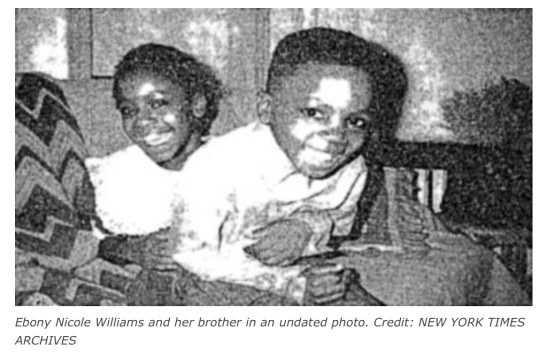
During the trial, Bronx Prosecutor William Hrabsky said of the crime: “The suffering that this poor child went through is beyond belief and puts this crime in the category of monstrous and barbarous.”
Despite pleading innocence in court and to media in later interviews, Blast had reportedly “bragged” about committing the crime to friends, some of whom would later testify against him on this basis.
While a rape conviction was never pursued, as the girl’s body had been too severely mutilated for authorities to collect a DNA sample, Blast and Franco both received 25-to-life for the murder of Williams.
One week after the publication of the Reduxx article reporting on Blast’s discharge from parole, Reduxx received an email from an account infuriated that the piece had mentioned the allegations that Blast had raped Williams. The email was sent from an address beginning with the number ‘4300.’
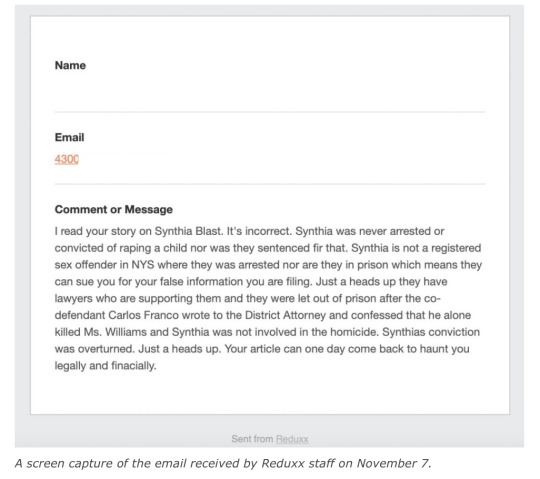
The same day, a Twitter account surfaced with the handle @Code4300, impersonating Reduxx Editor-in-Chief Anna Slatz, using her photo and Reduxx branding.
While posting highly disturbing, sexualized comments on Slatz, the account began following women’s rights advocates on Twitter in a clear effort to get their attention.

While posing as Slatz, the @Code4300 account claimed to be in a relationship with a trans-identifying male and called for a boycott against, and the banning of, Reduxx. The owner of the account also made several references to Blast and asserting his innocence, using both the female pseudonym and his birth name, Luis Morales.
The account also threatened Slatz, and claimed to have her home address. Within 24 hours, it began cycling through impersonating other female contributors and supporters of Reduxx, using their names and profile photos to post disturbing content.
Shortly after, @Code4300 was linked to an Instagram account similarly utilizing the ‘4300’ moniker — one which was quickly discovered to belong to Synthia China Blast.
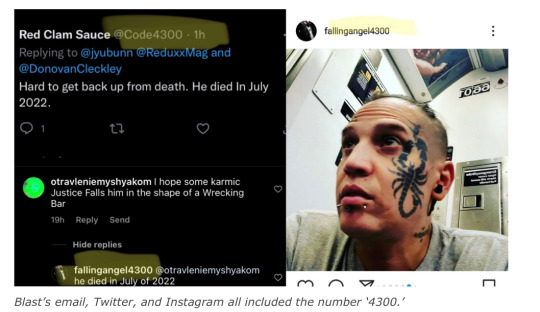
On Instagram, Blast posted about being in a women’s shelter in 2020, which would have been shortly after he was paroled. Around that same time, he advertised a bed available in his apartment for rent, requesting only “men into trans women or women into trans women” apply.
While using the @Code4300 moniker on Twitter, Blast had engaged in repeated calls for violence against women, and in particular women who are critical of the notion that men can become women.
“TERFs are not only anti-trans they are also anti-men. We must eradicate them before their diseases spread to our young children,” read the account’s description, which has since been changed, along with the username and profile photo.
Since being exposed as running the account on Twitter, Blast has continued to assert his innocence of the crimes he was convicted of — a trend that follows his previous claims to media that he was wrongfully accused.
In addition to calling for violence against women, the author made statements suggesting he believes that trans-identifying males are superior to women.
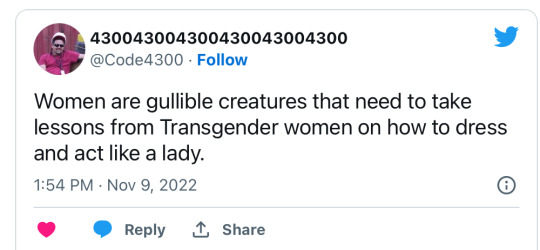
Prior to engaging in the targeted harassment of Reduxxstaff and women associated with the publication, @Code4300 claimed to be in favor of “abolishing prisons,” and celebrated both the shooting of a police officer and the stabbing of a Corrections Officer at Rikers Island.
In the following days, a second Twitter account claiming to be Blast was created using the name HuntingTERFs.
“For the record, my name is Synthia China Blast and I was wrongfully convicted of murder,” reads one post from November 10.

The second account also boasted that another convictionwould see Blast placed in a women’s prison. “If I’m ever again arrested, I go with the females now. No more men’s prison for me,” @KillingTime1235 wrote.
The account appears primarily dedicated to posting screenshots of female-committed crimes, with the intention of proving that “cis women are extremely violent and dangerous.”

In 2014, prominent transgender actor Laverne Cox appeared in a now-deleted promotional video produced by a trans activist prison reform lobbying organization, the Sylvia Rivera Law Project (SRLP).
In the video, Cox stated his support for the SRLP and the organization’s Prisoner Advisory Committee (PAC). He then read a letter from Blast which appealed to viewers’ sympathies and described his situation while incarcerated as a “denial of basic human rights.”
Cox later distanced himself from Blast after learning more details about the crimes he was convicted for.
In 2019, one year after Blast was first paroled, he appeared in a video posted to the SRLP’s official Facebook page, and was described as a Political Action Committee member and intern.

“
I came from being in a jail cell to learning about SRLP and its mission, who Sylvia Rivera, as a person, actually was, and … about Marsha P. Johnson, and I was definitely hooked into this movement,” Blast said.
“We all have a voice. And we live in a time, today, where that voice is finally being heard. We haven’t reached that milestone yet. We are all screaming together, and now they are finally listening,” Blast says, then promoting the SRLP as a center which can help transgender people change their names and legal identity.
“Whenever I find a transgender person, I ask them: Do you know about the Sylvia Rivera Law Project?”
Reduxx previously revealed another trans-identifying male convict who was specifically selected by the SRLP to participate in trans advocacy and prison reform campaigning. Xena Grandichelli, born Jeffrey Willsea, is a convicted child sex offender who has performed community outreach services for the SRLP. In 1994, Grandichelli pleaded guilty to 11 counts of sexual abuse involving a 3 year-old girl.
Grandichelli partnered with the Sylvia Rivera Law Project (SRLP) and was designated as a Movement Building Teammember. In a 2015 letter posted to the SRLP website, Grandichelli described how team members from the organization actively worked to recruit him while he was still incarcerated for sexually abusing a child.
Despite providing advocacy for convicted child abusers, the Sylvia Rivera Law Project receives the financial support of several notable institutions and figures, including the Stonewall Community Foundation and the trans-identifying medical and pharmaceutical millionaire Martine Rothblatt.
Blast is not the only trans-identified murderer who has been utilizing social media to threaten women critical of gender ideology.
In 2021, it was discovered that Swedish murdererMagdala Johansson had been targeting Twitter accounts who had posted details about his grisly crime.
Johansson, born Kristoffer, was convicted in 2013 of the brutal murder of his ex-girlfriend, 20-year-old Vatchareeya Bangsuan. Johansson stabbed Bangsuan to death before dismembering her and scattering her body parts in a nearby forested area. Some sources have also reported that Johansson masturbated over Bangsuan’s mutilated corpse, spreading his semen on her body parts.
Johansson was ultimately sentenced to 14 years, which was overturned on appeal to 10. He served just 6 years before being released in 2020.
Much like Blast, on Twitter and Instagram, Johansson called himself a “TERF Hunter,” and made misogynistic posts about women critical of gender ideology, sometimes while showing off his gun collection.
By Genevieve Gluck Genevieve is the Co-Founder of Reduxx, and the outlet's Chief Investigative Journalist with a focused interest in pornography, sexual predators, and fetish subcultures. She is the creator of the podcast Women's Voices, which features news commentary and interviews regarding women's rights.
#Synthia China Blast Is Luis Morales#Rest In Peace Ebony Nicole Williams#New York Department of Corrections and Community Supervision#harassment of the media#Transwomen and misogyny#Why I don’t trust the left when they call for abolishing prisons#Laverne Cox#Sylvia River Law Project (SRLP)#Prisoner Advisory Committee (PAC)#Leftist organizations really need to examine who they let in and represent them
6 notes
·
View notes
Note
how do ml's reconcile with lenin going for a bigbrainhaver hierarchy which just so happened to place him at the tippy top? most of the things he's quoted for writing make a kind of sense in that longwinded academic philosopher way, but, like, russia went from having a revolution against monarchy to having a monarchy, essentially, and what folks do tends to align with their desires, yeah? wouldn't that make everything he said, idk, suspicious?
we reconcile with this because none of this is even remotely true. lenin did not 'happen to be placed at the tippy top' but was in fact elected by the soviets, who worked in a very simple electoral system by which workers and peasants would elect representatives to their local soviet, who as well as administering local services would also elect members to higher bodies. the quote unquote bigbrainhaver hierarchy system in question was as follows:
The sovereign body is in every case the Congress of Soviets. Each county sends its delegates. These are elected indirectly by the town and county Soviets which vote in proportion to population, following the ratio observed throughout, by which the voters in the town have five times the voting strength of the inhabitants of the villages, an advantage which may, as we saw, be in reality three to one.
The Congress meets, as a rule, once a year, for about ten days. It is not, in the real sense of the word, the legislative body. It debates policy broadly, and passes resolutions which lay down the general principles to be followed in legislation. The atmosphere of its sittings is that of a great public demonstration. The Union Congress, for example, which has some fifteen hundred members, meets in the Moscow Opera House. The stage is occupied by the leaders and the heads of the administration, and speeches are apt to be big oratorical efforts.
The real legislative body is the so-called Central Executive Committee (known as the C. I. K. and pronounced "tseek") . It meets more frequently than the Congress to which it is responsible-in the case of the Union, at least three times in the year-passes the Budget, receives the reports of the Commissars (ministers), and discusses international policy. It, in its turn, elects two standing bodies:
(1) The Presidium of twenty-one members, which has the right to legislate in the intervals between the sittings of the superior assemblies, and also transacts some administrative work.
(2) The Council of Peoples' Commissars. These correspond roughly to the Ministers or Secretaries of State in democratic countries and are the chiefs of the administration. Meeting as a Council, they have larger powers than any Cabinet, for they may pass emergency legislation and issue decrees which have all the force of legislation. Save in cases of urgency, however, their decrees and drafts of legislation must be ratified by the Executive Committee (C.I.K.). In another respect they differ from the European conception of a Minister. Each Commissar is in reality the chairman of a small board of colleagues, who are his advisers. These advisory boards, or collegia, meet very frequently (it may even be daily) to discuss current business, and any member of a board has the right to appeal to the whole Council of Commissars against a decision of the Commissar.
—H.N. Brailsford, How The Soviets Work (1927)
you might notice that the congresses of soviets were not directly elected -- this is because they were elected by local soviets, who were directly elected, in a process that many people have given first hand accounts of:
I have, while working in the Soviet Union, participated in an election. I, too, had a right to vote, as I was a working member of the community, and nationality and citizenship are no bar to electoral rights. The procedure was extremely simple. A general meeting of all the workers in our organisation was called by the trade union committee, candidates were discussed, and a vote was taken by show of hands. Anybody present had the right to propose a candidate, and the one who was elected was not personally a member of the Party. In considering the claims of the candidates their past activities were discussed, they themselves had to answer questions as to their qualifications, anybody could express an opinion, for or against them, and the basis of all the discussion was: What justification had the candidates to represent their comrades on the local Soviet.
As far as the elections in the villages were concerned, these took place at open village meetings, all peasants of voting age, other than those who employed labour, having the right to vote and to stand for election. As in the towns, any organisation or individual could put forward candidates, anyone could ask the candidate questions, and anybody could support or oppose the candidature. It is usual for the Communist Party to put forward a candidate, trade unions and other organisations can also do so, and there is nothing to prevent the Party’s candidate from not being elected, if he has not sufficient prestige among the voters.
In the towns the “ electoral district ” has hitherto consisted of a factory, or a group of small factories sufficient to form a constituency. But there was one section of the town population which has always had to vote geographically, since they did not work together in one organisation. This was the housewives. As a result, the housewives met separately in each district, had their own constituencies, and elected their own representatives to the Soviet. Here, too, vital interest has always been shown in the personality of every candidate. Why should this woman be elected ? What right had she to represent her fellow housewives on the local Soviet ? In the district next to my own at the last election the housewife who was elected was well known as an organiser of a communal dining-room in the district. This was the kind of person that the housewives wanted to represent them on the Soviet. Another candidate, a Communist, proposed by the local organisation of the Party, was turned down in her favour.
[...]
The election of delegates to the local Soviet is not the only function of voters in the Soviet Union. It is not a question here of various parties presenting candidates to the electorate, each with his own policy to offer. The Soviet electorate has to select a personality from its midst to represent it, and instruct this person in the policy which is to be followed when elected. At a Soviet election meeting, therefore, as much or more time may be spent on discussion of the instructions to the delegate as is spent on discussing the personality of the candidates.
At the last election to the Soviets, in which I personally participated, we must have spent three or four times as much time on the working out of instructions as we did on the selection of our candidate. About three weeks before the election was to take place the trade union secretary in every department of our organisation was told by the committee that it was time to start to prepare our instructions to the delegate. Every worker was asked to make suggestions concerning policy which he felt should be brought to the notice of the new personnel of the Moscow Soviet.
As a result, about forty proposals concerning the general government of Moscow were handed in from a group of about twenty people. We then held a meeting in our department at which we discussed the proposals, and adopted some and rejected others. We then handed our list of pro¬ posals to a commission, appointed by the trade union committee, and representing all the workers in our organisation. This Commission co-ordinated the pro¬ posals received, placed them in order according to the various departments of the Soviet, and this co-ordinated list was read at the election meeting itself, again discussed, and adopted in its final form.
—Pat Sloan, Soviet Democracy (1937)
Between the elections of 1931 and 1934, no less than 18 per cent of the city deputies and 37 per cent of village deputies were recalled, of whom only a relatively small number — 4 per cent of the total — were charged with serious abuse of power. The chief reasons for recall were inactivity — 37 per cent — and inefficiency — 21 per cent. If these figures indicate certain lacks in the quality of elected officials, they show considerable activity of the people in improving government.
The electorate of the Peasants' Gazette, for example, consisted of some 1,500 employees, entitled to elect one deputy to the Moscow city soviet and two to the ward soviet. For more than a month before the election every department of the newspaper held meetings discussing both candidates and instructions. Forty-three suggested candidates and some 1,400 proposals for the work of the incoming government resulted from these meetings, which also elected committees to boil down and classify the instructions. These committees issued a special four-page newspaper for the 1,500 voters; it contained brief biographies of the forty-three candidates, an analysis of their capacities by the Communist Party organization of the Peasants' Gazette, and the "nakaz," or list of "people's instructions," classified by subject and the branch of government which they concerned. At the final election meeting of the Peasants* Gazette there was literally more than 100 per cent attendance, since some of the staff who for reasons of absence or illness had not been listed as prospective voters returned from sanatoria or from distant assignments to vote. The instructions issued by the electorate in this manner — 1,400 from the Peasants' Gazette and tens of thousands from Moscow citizens — became the first business of the incoming government.
—Anna Louise Strong, The New Soviet Constitution (1937)
does this mean that the soviet project was some utopian perfect system? no. there were flaws in the system like any other. it disenfranchised the rural peasantry (although not, i would like to add, to any extent greater or even equivalent to the extent to which the US electoral system disenfranchises the urban working class) -- the various tiers of indirect selection created a divide between the average worker and the highest tier of the executive -- and various elements of this fledgling system would calcify and bureaucratise over time in ways that obstructed worker's democracy. but saying that it was 'a monarchy' is founded in absolutely nothing except the most hysterical anticommunist propaganda and tedious orwellian liberal truisms.
even brailsford, in an account overall critical of the soviet system, had to admit:
Speaking broadly, the various organs of the system, from the Council of Commissars of the Union down to the sub-committees of a town Soviet, are handling the same problems. Whether one sits in the Kremlin at a meeting of the most august body of the whole Union, the "C.I.K.," or round a table in Vladimir with the working men who constitute its County Executive Committee, one hears exactly the same problems discussed. How, be-fore June arrives, shall we manage to reduce prices by ten percent? What growth can we show in the number of our spindles, or factories, and in the number of workers employed? When and how shall we make our final assault on the last relics of illiteracy? Or when shall we have room in our schools, even in the remotest village, for every child? Was it by good luck or good guidance that the number of typhus cases has dropped in a year by half? And, finally, how can we hasten the raising of clover seed, so that the peasants who, at last, thanks to our propaganda, are clamoring for it, may not be disappointed?
—H.N. Brailsford, How The Soviets Work (1927)
genuinely, i think you should take a moment and think about where you learned about the soviet union. have you read any serious historical work on the topic, even from non-communist or anti-communist sources? because even imperialist propagandists have to make a pretence at engaging with actual facts on the ground, something which you haven't done at all -- and yet you speak with astounding confidence. i recommend you read some serious books instead of animal farm and reflect on why you believe the things you believe and how you know the things you think you know.
1K notes
·
View notes
Text
If anyone is curious about what is happening in Australia at the moment, today Australian citizens voted on whether or not there should be added to the constitution the need for the government to set up an advisory board made up of Aboriginal people and Torres Strait Islanders (Australia's indigenous people) so that they can bring forward issues affecting their communities as well as provide feedback on how new laws might affect the. The results of the vote was announced a few hours ago and it was a No, with over half the population deciding not to include this in the constitution.
The reason this inclusion in the constitution was so important is because of one simple fact: Australia is a very racist country. It pretends not to be, pushing a narrative of assimilation (for example, I remember ads about how we're "one country, one people" playing on tv when I was a kid, and many of the ads against voting yes focused on how "this voice would divide us").
The Stolen Generation only ended in 1969. If you don't know what this is, The Stolen Generation refers to a period in which the government forcibly took Indigenous children from their communities, families and cultures. These children were then taken to institutions, or adopted - being punished for speaking their own languages, and often being subject to abuse and neglect. Most of these children never saw their families again. Many indigenous traditions and cultural practices are passed down from generation to generation orally, meaning that The Stolen Generation led to a lot of traditions being lost.
The reason i'm explaining what The Stolen Generation is, is that it still massively affects indigenous people today. The Stolen Generation only ended 54 years ago, meaning that the CHILDREN taken from their families are still very much alive today, and the trauma they experienced still affects their communities. There's a massive gap in education, employment, etc between indigenous and non-indigenous peoples.
The Stolen Generation isn't the only contributor to Australia's culture of racism, or the systematic racism here; but I wanted to inform people about it because it makes a point and spreads awareness about Australia's history.
This no result is a sobering reality check. The advisory committee would have meant issues such as Black deaths in custody, and the gap could have been prioritized by the government.
Australia is still very much racist. People are still uneducated on the difference between equality and equity. People don't want to put in the work to make the world better and decolonize their minds. The government still doesn't give a shit about it's people. Misinformation is rampant. Fearmongering is rampant.
176 notes
·
View notes
Text

The sanctuaries and monuments of the national marine sanctuary system run along the shorelines and include the waters of many Native and Tribal Nations. We work in partnership with these communities to protect resources, shape policy, conduct research, and provide educational programs.
At Olympic Coast National Marine Sanctuary (pictured here), the Makah Tribe, Quileute Tribe, Hoh Tribe, and Quinault Indian Nation have a critical role in sanctuary management as active members of the Intergovernmental Policy Committee and the Sanctuary Advisory Council.
Join us in commemorating Native American Heritage Day, today, respecting and honoring the deep cultural ties of Indigenous people to the ocean.
68 notes
·
View notes
Text
by Dion J. Pierre
Announced in January, the Presidential Task Force on Antisemitism is Harvard University’s response to years of antisemitic incidents that earned the school the distinction of being labeled the most antisemitic campus in American higher education by education watchdog AMCHA Initiative. A now defunct group had been created by former president Claudine Gay, the Antisemitism Advisory Group, amid an explosion of antisemitic activity on campus following Hamas’ massacre across southern Israel on Oct. 7.
Gay eventually resigned from her position after providing controversial answers to a congressional committee about her efforts to manage the problem and being outed as a serial plagiarist. In her absence, Garber pushed ahead with forming task forces for addressing both antisemitism and Islamophobia.
Since then, the antisemitism group’s membership have stirred controversy and speculation. In January, Jewish community activists and nonprofit leaders criticized its naming history professor Derek Penslar as a co-chair because, in his writings and public remarks, he had described concerns about rising antisemitism at Harvard as “exaggerated” and blamed Israel for fostering anti-Zionism. According to the Crimson, Penslar considered resigning but decided against doing so. In Jan., Rabbi David J. Wolpe stepped down from the group, saying in a statement on X that “both events on campus” and Gay’s congressional testimony “reinforced the idea that I cannot make the sort of difference I had hoped.”
Last week, the school issued a statement denouncing another antisemitic outrage, a faculty anti-Zionist group’s posting on social media an antisemitic cartoon which showed a left-hand tattooed with a Star of David containing a dollar sign at its center dangling a Black man and an Arab man from a noose. The group’s leader, professor Walter Johnson, has since resigned as a member.
42 notes
·
View notes
Text
The Midterms: Voting & The Disability Community

Join @whenweallvote, the American Association of People with Disabilities’ REV UP Voting Campaign, and The Whole Person to ask questions about the upcoming midterm elections, how you can register to vote, and all you need to know about Election Day.
September 12-16, 2022 is Disability Voting Rights Week, a time for advocates and communities to build the power of the disability vote through voter registration, voter education, community engagement, and more! The disability community is one of the largest voting blocs in the country, with over 38 million eligible voters with disabilities in 2020. The community also faces access barriers at the ballot box: only 17.7 million voters of the 38 million eligible voted in 2020. This September 16th, get your questions answered about the intersection of voting and the disability community and how to make voting more accessible to disabled folks.
What are you waiting for, Tumblr? Ask them a question, and head over here to see their answers. 🗳️Don't forget to get registered to vote (HERE)🗳️!
MEET THE PANEL
Priestley M. Johnson (She/Her), Director of Strategic Community Partnerships, When We All Vote
Priestley M. Johnson the Director of Strategic Community Partnerships and is responsible for When We All Vote’s partnership program that delivers voter registration tools and resources to hundreds of partners across the nation. Ms. Johnson is a passionate advocate and avid relationship builder dedicated to using her skill set of strategic partnerships, project management, business development, and event planning. With previous experience in the Obama White House and the International Women’s Forum, Priestley is passionate about advocating for more resources for those in need and building capacity through fundraising. A proud Howard alumna, Johnson is committed to moving the needle.
Lilian Aluri (She/Her), REV UP Voting Campaign Coordinator
Lilian Aluri started off interning at AAPD in the summer of 2020, as a NYU VOTE 2020 Fellow, getting out the disability vote in the 2020 elections. Lilian then began a contract with AAPD and has since been working together with the REV UP team to continue to build the power of the disability vote, research voting accessibility issues, and also support AAPD’s broader advocacy. In her current role as the REV UP Voting Campaign Coordinator, Lilian supports the national REV UP network, facilitating trainings and webinars, convening the advisory committee, organizing national voting initiatives and collaborating with REV UP organizers to advance the power of the disability vote. Lilian also manages AAPD’s blog and a weekly email digest highlighting disability in the news.
As the older sister of a young man with Down syndrome and as someone with some mental health disabilities, Lilian values her role at AAPD as a chance to help create a more inclusive and just society in which all people with disabilities can thrive.
Kendra A. Burgess (She/Her), Public Policy Coordinator, The Whole Person
Kendra A. Burgess joined The Whole Person in 2019 as Public Policy Coordinator, where she currently advocates for issues impacting people with disabilities at the city, state, and federal levels of government in Kansas and Missouri.
Prior to this role, Kendra served as a congressional staffer for the Honorable U.S. Senator Claire McCaskill for several years, where she handled a portfolio of federal issues, including labor, healthcare, and housing. Additionally, she lends her voice to elevate issues impacting people with disabilities by writing opinion articles for regional news outlets, educating the public through press interviews, and collaborating with community partners to offer Diversity Equity and Inclusion Programming. Learning to thrive through her own invisibly disabilities, Kendra is a volunteer women’s health advocate by serving as the Kansas/Missouri Representative for the Worldwide EndoMarch, an organization seeking to advocate for those living with Endometriosis.
#midterm#take action#signal boost#midterm elections#disability voting rights week#disability rights#issue time#voter rights#voter registration#wwav x aapd x twp x tumblr
699 notes
·
View notes
Text

Great Western Railway celebrates The Princess Royal’s lifetime of dedicated service by naming train in her honour
Great Western Railway has named a train after HRH The Princess Royal in recognition of her support for more than 300 charities, organisations and military regiments in the UK and overseas.
Representatives from a host of those organisations joined guests at London Paddington on Thursday 2nd May as Intercity Express Train 800024 was named in honour of Her Royal Highness.
Her Royal Highness was joined at London Paddington by husband Vice Admiral Sir Tim Laurence, a member of the GWR Advisory Board.
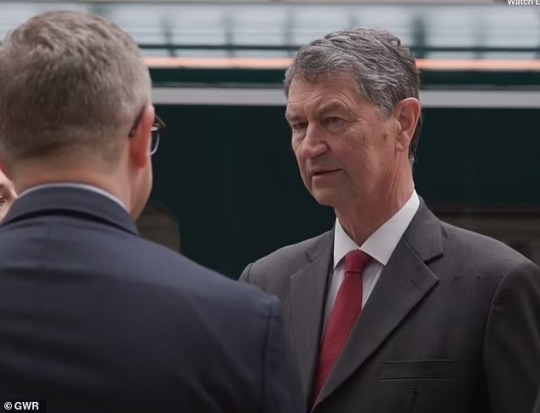
After the unveiling, The Princess Royal was introduced to guests including the Secretary of State for Transport, Mark Harper MP, former Prime Minister Theresa May and Transport for London Commissioner Andrew Lord.
Mark Hopwood, Great Western Railway Managing Director, said: “Naming trains has been a tradition on the railway, and especially on the Great Western Railway, since the earliest days of train travel.”
“Today GWR proudly continues this tradition, recognising and celebrating inspirational individuals who have shaped the communities and the nation. Her Royal Highness has dedicated a large part of her working life to official engagements and visits and we are delighted to recognise this immense contribution by carrying her name on the side of this Intercity Express Train.”

Transport Secretary, Rt Hon Mark Harper MP, said: “I’m delighted to see one of GWR’s trains named after Her Royal Highness The Princess Royal in recognition of her remarkable commitment to public service.
“Her Royal Highness has made a significant contribution to so many important charities, events and public services so it gives me great pride to celebrate this through one of the greatest traditions on our railways.”
Inspired by the heritage of GWR’s King George V locomotive, two sides of a coin appear on the side of GWR’s named Intercity Express Trains.
With the Coat of Arms of the GWR on one side of coin, the other will include an illustration of The Princess competing at the 1976 Montreal Olympics. Seated on the Queen’s horse, Goodwill, Her Royal Highness was taking part in the equestrian three-day event – the first member of the Royal Family to feature in the Olympics.
HRH went on to play a part in London’s successful bid to host the 2012 Olympic Games and today brings insight and experience to her role as a British member of the International Olympic Committee, as well as being President of the British Olympic Association.

Annamarie Phelps CBE, Vice-Chairman of the British Olympic Association, said: “HRH The Princess Royal is synonymous with British Olympic sport and the British Olympic Association. Having competed as an Olympian, she also holds the unique record of being an IOC member, having led an international sport federation and, of course, being the mother to another Olympian, Zara Tindall. We are delighted to join her today to celebrate the naming of this train in her honour.”
The Princess has been President of Save the Children UK since 1970, visiting projects in many countries including China, Cambodia, Botswana, Madagascar and The Philippines.

Gemma Sherrington, Interim Chief Executive of Save the Children, said: “We are delighted that Her Royal Highness The Princess Royal is being honoured by Great Western Railway for her lifelong charitable commitments. The Princess Royal has supported the work of Save the Children for over 50 years and as our Patron has worked tirelessly to support us, visiting teams in the UK and around the world and regularly meeting with our inspirational fundraisers and volunteers.
“We continue to be incredibly grateful for The Princess Royal’s support to help us continue to deliver lasting change for children and their families in the UK and across the globe.”
HRH has been closely involved with the creation of several charities, including The Princess Royal’s Trust for Carers (now Carers Trust), Transaid and Riders for Health, and has been Patron of the Motor Neurone Disease Association since 2008.
Tanya Curry, chief executive of the MND Association, said, “HRH The Princess Royal has offered steadfast support to the MND Association for more than 16 years and is a remarkable advocate for people with motor neurone disease, a terminal illness which affects more than 5000 people in the UK at any one time.
“We are incredibly grateful to Her Royal Highness for her unwavering dedication throughout her time as Royal Patron of the MND Association, and we are delighted her commitment to charitable causes is being recognised in this way.”

#what an honour!!!#always there to support his wife#princess anne#princess royal#tim laurence#timothy laurence
22 notes
·
View notes
Text
In early 2022, leaders of the rapidly growing district announced plans to ask voters for $394 million in bonds to build a new high school and renovate existing campuses. School board members established a community advisory committee that would counsel the district.
Gore chose Criswell as her representative on the committee. She thought that once Criswell saw the district’s needs firsthand, he would support the bonds. But the opposite happened. Criswell urged voters to reject the measure, claiming some parts, such as providing full-day pre-K programs for all students, were “communist in nature.”
(...) According to Gore, Criswell also pressured her to stop speaking with all of her fellow school board members, except for Graft. “They’re just lying to you. They’re not your friends,” she recalled him saying.
“I was like, how am I supposed to do my job as a board member if I’m not talking to anybody?” Gore said. “None of it was adding up.”
15 notes
·
View notes
Text
by Alec Schemmel
Last fall, Massachusetts Institute of Technology president Sally Kornbluth tapped a group of Jewish faculty members to advise the school on a new initiative meant to combat campus anti-Semitism. The participants were "hopeful," they said in an email to fellow MIT staff, that the move would help them "more effectively influence the decision making to reduce the tensions on campus."
Shortly thereafter, in January, an announcement from MIT chancellor Melissa Nobles dashed those hopes.
The school's "Standing Together Against Hate" (STAH) initiative, Nobles said, would include four panels: one on anti-Semitism, one on "campus freedom of expression," one on Islamophobia, and one on "anti-Palestinian racism." Omitted from the speaker series was any talk on racism or hatred targeting Israelis and Zionists.
MIT's hand-picked speakers also prompted concern. Islamophobia panelist Dalia Mogahed in the wake of Oct. 7 endorsed Hamas terrorism as an act of lawful "resistance" and suggested that Israelis are "savages" who "kill babies" and "bomb hospitals." Free speech panelist Erwin Chemerinsky, meanwhile, serves as the dean of the University of California, Berkeley, School of Law, which was sued in November over "unchecked" campus anti-Semitism.
For the Jewish faculty members, Nobles's announcement came as a surprise—not because MIT declined to take their advice on panel topics and speakers, but because the school failed to seek out their advice altogether. The members responded by disbanding their advisory group.
"As our group was originally conceived in the framework of STAH, we want to emphasize that we had no input to the published program and/or reviewed it before its announcement," the advisory group members said in their February email. "As a result, we recently informed President Kornbluth that we would disband the advisory group."

Kornbluth has since vowed to reassess MIT's policies on "harassment, bullying, intimidation and discrimination." She also launched the "Standing Together Against Hate" initiative in November, which MIT leaders said would help "bring our community together" by addressing anti-Semitism and other "tension between some groups and individuals."
Instead, the initiative created tension between Kornbluth and Jewish faculty members, calling into question the embattled president's pledge to combat anti-Semitism. For the MIT Israel Alliance, a campus group formed in the wake of Oct. 7 to protect Jewish students, Kornbluth's freezing out of the advisory committee marks a "missed opportunity … to tackle the very real and disturbing heightened antisemitism on campus."
23 notes
·
View notes
Text
The new Covid shots, made by Pfizer and Moderna, target a subvariant of omicron, called XBB.1.5. More than 90% of the Covid viruses circulating now are closely related to that strain, the CDC said.
The recommendation from the CDC's Advisory Committee on Immunization Practices was broad, suggesting that everyone ages 5 and older get one dose of the vaccine this fall. The group voted in favor of the recommendation 13 to 1.
[...]
For the first time, the cost of Covid vaccines will not be covered by the federal government, though most insurance plans, both private and public, will cover them. The list price will top $100 per shot.
Those who are uninsured will have access to the shots free of charge through community health centers, as well as a "bridge" program from the Biden administration through the end of next year.
But previous federal funds that went toward outreach, education and programs that assured vaccine access in vulnerable lower-income areas have dried up.
52 notes
·
View notes
Text
Interplanetary Federation of Education (IFEd)
(WIP)
Mission Statement: IFEd is dedicated to fostering excellence in education, promoting collaboration among planets, and ensuring educational equity and community engagement.
Structure:

The IFEd is structured consists of a panel led by an experienced Chairperson and comprising representatives from participating planets, education experts, community leaders, and youth representatives. Policy advisors ensure alignment with interplanetary governance, while a dedicated Diversity and Inclusion Officer fosters equitable representation. The Secretary-General manages administrative tasks, committee chairs lead focused sub-committees on key aspects like charity assessment and resource allocation, and an advisory council, including seasoned educators, former members, and individuals with historical knowledge, provides valuable guidance.
Resource Allocation Committee
The Resource Allocation Committee (RAC) is tasked with overseeing the distribution of resources to schools based on their charitable contributions. This committee is responsible for evaluating and quantifying schools' public service, research contributions, and donations. It utilizes a weighted system, considering factors such as the size, quality, history, and prestige of each school to determine tiered contribution levels. The committee establishes a fair and dynamic framework, ensuring that schools with varying resources and capacities can actively engage in meaningful philanthropy. The RAC plays a crucial role in fostering equity, accountability, and continuous improvement within the interplanetary education system.
Quantifiable Metrics for Charitable Contributions:
Public Service
Volunteer Hours: The number of volunteer hours contributed by students and staff from elite schools to community service projects. This metric reflects the direct involvement of the school community in public service.
Community Impact Index: A standardized index that quantifies the tangible impact of community service projects initiated by schools.
Public Research
Research Publications: Research publications produced by schools that directly contribute to public knowledge, address societal challenges, or provide solutions to community issues.
Innovation Index: An innovation index that assesses the level of creativity and novelty in research projects undertaken by schools.
Public Charity
Monetary Donations: The total amount of monetary donations made by schools to charitable organizations, community projects, or public welfare initiatives. This provides a direct measure of financial support to the community.
Scholarship Funds: The establishment and contributions to scholarship funds that support underprivileged students or those with exceptional talent. This metric reflects a commitment to fostering educational opportunities within the broader community.
Material Contributions: The value and quantity of non-monetary donations made by schools. This includes items such as food, potions, elixirs, medicine, technology, and other tangible contributions that directly benefit the community.
Resource Impact Assessment: Evaluates the impact of non-monetary donations on the community. This assessment could consider the essential needs addressed, technological advancements shared, or improvements in the quality of life resulting from these donations.
Tiered Contribution Levels:
Tier 1 Contributors
Characteristics:
Size: Large student body and extensive facilities.
Quality: Renowned staff, state-of-the-art facilities, and high-achieving students.
History/Prestige: Long-standing history and high prestige within the interplanetary education system.
Contribution Requirement:
High contribution requirement due to the school's extensive resources and capacity for significant impact.
Tier 2 Contributors
Characteristics:
Size: Moderate to large student body with well-maintained facilities.
Quality: Competent staff, good facilities, and academically proficient students.
History/Prestige: Established history and a positive reputation.
Contribution Requirement:
Moderate contribution requirement, reflecting the school's capacity to make a substantial impact.
Tier 3 Contributors
Characteristics:
Size: Varied student body size with adequate facilities.
Quality: Capable staff, functional facilities, and engaged students.
History/Prestige: A decent history and a respectable reputation.
Contribution Requirement:
Moderate to low contribution requirement, considering the school's balanced resources and potential impact.
Tier 4 Contributors
Characteristics:
Size: Smaller student body with basic facilities.
Quality: Developing staff, basic facilities, and a growing student body.
History/Prestige: Limited history and reputation.
Contribution Requirement:
Low contribution requirement, recognizing the school's developing status and potential for growth.
Tier 5 Contributors
Characteristics:
Size: Small student body and limited facilities.
Quality: Novice staff, basic facilities, and entry-level students.
History/Prestige: Recently established with minimal reputation.
Contribution Requirement:
Minimal contribution requirement, acknowledging the school's entry-level status and the need for gradual growth.
#winx rewrite#winx#winx club#winx fanfic#winx headcanons#winx club headcanons#winx club fanfiction#winx club fanfic#winx club rewrite#winx club headcanon#winx alfea#winx club alfea#red fountain#winx club reboot#winx reboot#cloud tower#winx club cloud tower#winx cloud tower
22 notes
·
View notes
Text
The FDA, between now and May 8, is accepting public comments for their upcoming vaccine committee meeting. Let them know that all of us need access to COVID vaccines at least twice a year.
Make your voice heard and ask the FDA Vaccines and Related Biological Products Advisory Committee Meeting to:
Ensure vaccine manufacturers anticipate the upcoming dominant strain of SARS-CoV-2.
Recommend updated COVID vaccines for all ages AND
Strengthen our vaccine drive by recommending more frequent boosting (at least every six months) and more frequent updates to the vaccines, adjusted for the latest variants.
Submit a public comment. Feel free to use our sample language below.
You can also register to give Oral Public Comment at the upcoming May 16 online FDA Vaccines and Related Biological Products Advisory Committee Meeting at: [email protected] on May 1, 2024. THAT’S TONIGHT!
Submitted written comments for the meeting must be received by the FDA via the Federal Register no later than May 8, 2024 at 11:59 Eastern Daylight Time.
It’s important to submit a personalized comment, which could include the importance of anticipating the next dominant viral strain, the lack of vaccine access that has impacted or would impact you, or how out-of-pocket costs are a barrier in your family or community. Feel free to take inspiration from or borrow the language in our sample public comment below.
Docket No. FDA–2024–N–0970
Scientific evidence indicates updated vaccines are needed to address the ongoing changes in COVID variants, and they should ideally be allowed, available, and fully covered by public funds and/or insurance, for people of all ages at least every six months.
The vaccine schedule should address waning efficacy in the months following vaccination [1-3] as well as emergence of new SARS-CoV-2 strains. The FDA’s decision will affect the current and future vaccine approach including what healthcare providers recommend, what health insurance covers, and level of public engagement.
It is of utmost importance that the FDA anticipates the newest viral variants and provides recommendations that anticipates the next dominant strain in the next six months. This requires that the FDA ensure that manufacturers anticipate the newest variants.
Restricting vaccinations to only annual updates misses an opportunity, given that there is the potential to update the vaccines to better match perpetually emerging variants. Updates to all vaccine types are needed, and mRNA vaccines are particularly suited to frequent updates.
The recommendation for only annual vaccination also creates barriers for vulnerable people and discourages high risk people from getting needed vaccine boosters.
The FDA must ensure support equitable and affordable access to updated vaccines and prevent limited access because of financial constraints or demographics by advocating for programs such as the CDC’s bridge program that ensures no cost access. [4]
References:
Link-Gelles R. COVID-19 vaccine effectiveness updates. Presented at: FDA VRBPAC Meeting; June 15, 2023. Accessed February 9, 2024. https://www.fda.gov/media/169536/download
Wu N, Joyal-Desmarais K, Vieira AM, et al. COVID-19 boosters versus primary series: update to a living review. The Lancet Respiratory Medicine. 2023;11(10):e87-e88. doi:10.1016/S2213-2600(23)00265-5
Menegale F, Manica M, Zardini A, et al. Evaluation of Waning of SARS-CoV-2 Vaccine–Induced Immunity: A Systematic Review and Meta-analysis. JAMA Netw Open. 2023;6(5):e2310650. doi:10.1001/jamanetworkopen.2023.10650
https://www.cdc.gov/vaccines/programs/bridge/index.html
Full instructions for written and oral comment and meeting information can be found at: https://www.fda.gov/advisory-committees/advisory-committee-calendar/vaccines-and-related-biological-products-advisory-committee-may-16-2024-meeting-announcement
FDA Vaccines and Related Biological Products Advisory Committee Meeting on the Federal Register: https://www.federalregister.gov/documents/2024/03/04/2024-04523/vaccines-and-related-biological-products-advisory-committee-notice-of-meeting-establishment-of-a
#op#uspol#medical#public health#covid#covid-19#covid19#covid 19#coronavirus#sars-cov-2#sars cov 2#pandemic#coronavirus pandemic#covid pandemic#covid vaccine#covid conscious#covid cautious#covid isn't over#food and drug administration#fda#people's cdc#pcdc#links
14 notes
·
View notes
Text
Brown University students launch 'hunger strike for Palestine'
A broad coalition of students, including Palestinian and Jewish ones, demand university call for a ceasefire in Gaza
A coalition of students at Brown University in Rhode Island have embarked on a hunger strike demanding that the university divest from companies profiting from the ongoing genocide in Gaza.
In a statement sent to Middle East Eye on Friday, the group said that the 19 students - made up of Palestinians, Jews, as well as others from the student community - would go on with their hunger strike until the university did its part to promote an immediate and permanent ceasefire by introducing a divestment resolution at the next meeting held by university's governing body.
The Corporation of Brown University, the university's highest governing body, will hold its first meeting of 2024 on the 8th and 9th of February.
"Given the escalating violence in Gaza, this hunger strike emphasises the urgency of passing a divestment resolution in this meeting rather than delaying the process any further," the students said in a statement shared with MEE.
Palestine Solidarity Caucus and Jews for Ceasefire Now who organised the hunger strike, said that they want the resolution to follow the recommendations of a report released in 2020 by the Advisory Committee on Corporate Responsibility in Investment Practices (ACCRIP) that called for divestment from companies involved in the occupation in Palestine.
14 notes
·
View notes
Text
Nearly two dozen agencies in the Kingston, Ont., area are asking residents what they think about decriminalizing illegal drugs for personal use as the region sees deaths from opioid use skyrocket.
Between 2014 and 2020, there was a 330 per cent rise in opioid-related deaths in the region served by Kingston, Frontenac and Lennox & Addington (KFLA) Public Health, according to numbers from the health unit.
As a result, the Kingston, Frontenac, and Lennox & Addington Community Drug Strategy Advisory Committee has launched a survey to get people's thoughts on decriminalization — a tactic that's been implemented elsewhere, though not without controversy.
"It's not quite the same as legalization, but it's lifting that legal penalty for someone that may have [drugs] on them," said Sara Tryon, program planner with KFLA, one of the committee's community partners. [...]
Continue Reading.
Tagging: @politicsofcanada
69 notes
·
View notes
Text
16-year-old non-binary student Nex Benedict was beaten to death at Owasso High School in Oklahoma.
Self-described stochastic terrorist and January 6th Capitol rioter Chaya Raichik, owner of the social media account Libs of TikTok, has become infamous for her viral harassment and moral panic campaigns targeting minorities— with an emphasis on vilifying LGBTQ+ existence. Since 2021, Raichik’s posts targeting advocates for and members of the LGBTQ+ community have been followed with a deluge of violent death threats (including lynching threats against the Los Angeles Unified School District).
Nowhere has Raichik’s influence been more visible than Oklahoma, where her anti-LGBTQ+ exploits earned her an official position on the Oklahoma Department of Education’s Library Media Advisory Committee by controversial far-right Superintendent Ryan Walters. Under Walters’ leadership, Oklahoma has been aggressively working to ban books and education on LGBTQ+ issues in schools across the state, with Oklahoma’s Attorney General Gentner Drummond stating that proposed rules to ban LGBTQ+ books and content were “unconstitutional and cannot be enforced.” It’s been confirmed that Raichik’s posts have fueled multiple bomb threats against schools specifically in Oklahoma.
Officials from Oklahoma told NBC News that they believe Chaya Raichik’s anti-LGBTQ+ culture warring “sparked threats in their localities with her posts on social media that digitally heckle people such as drag performers, LGBTQ teachers and doctors who treat transgender patients.”
One of these instances was at the Owasso School District (just outside of Tulsa, Oklahoma). In 2022, Chaya Raichik targeted an Owasso teacher for speaking out in support of LGBTQ+ students who lacked acceptance from their parents. Raichik’s post was shared thousands of times on social media and resulted in the teacher getting condemned and harassed until they resigned. The posts Raichik made about the teacher were later deleted, but have been archived. It’s unclear what prompted the deletion of the posts by Raichik. We know Raichik’s Libs of TikTok posts have contributed to a culture of intolerance against LGBTQ+ youth in schools, and now this hate may be manifesting beyond mere threats.
This month, a non-binary 16-year-old student at Owasso High School was brutally murdered in the girl’s restroom. According to local news outlets and family, Nex Benedict was beaten by three older female students. The mother of Benedict’s best friend told KJRH News that "one of the girls was pretty much repeatedly beating [Benedict’s] head across the floor.” Reports say Benedict was unable to take themselves to the nurse’s office after a teacher finally intervened in the brutal assault. For reasons that remain unclear, Owasso High School refused to call an ambulance for 16-year-old Nex Benedict, who died from their injuries in the hospital the next day. A motive for this killing has not been shared by law enforcement, but we know that schools in Oklahoma have been specifically pushing violent eliminationist rhetoric against transgender and non-binary youth— a fact exemplified by the state’s hiring of Chaya Raichik following her incitements of terror against the state’s schools over LGBTQ+ rights.
“This is the inevitable result of the anti trans moral panic,” said civil rights attorney Alejandra Caraballo, who shared an article about Benedict’s death published by the Pittsburgh Lesbian Correspondents Blog. “This is horrifying, and comes as lawmakers are increasingly spreading fear over trans people in bathrooms,” wrote LGBTQ+ journalist and advocate Erin Reed regarding this murder.
12 notes
·
View notes